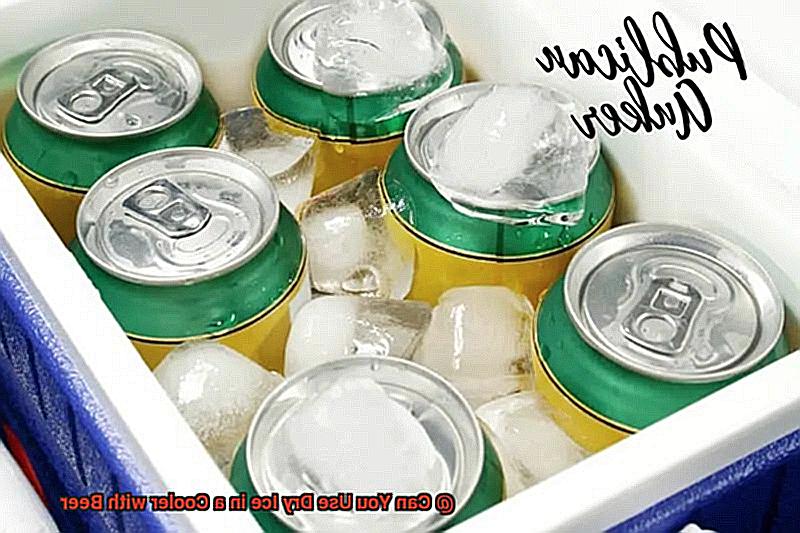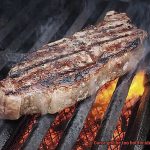Are you planning a weekend camping trip or tailgate party and want to keep your beer chilled for an extended period?
If so, you may be wondering how to maintain that refreshing coolness. One option that comes to mind is using dry ice in your cooler.
Dry ice, a solid form of carbon dioxide, is a popular cooling agent used by many people to keep their food and drinks cold while on the go. It’s even more effective than regular ice at maintaining frigid temperatures.
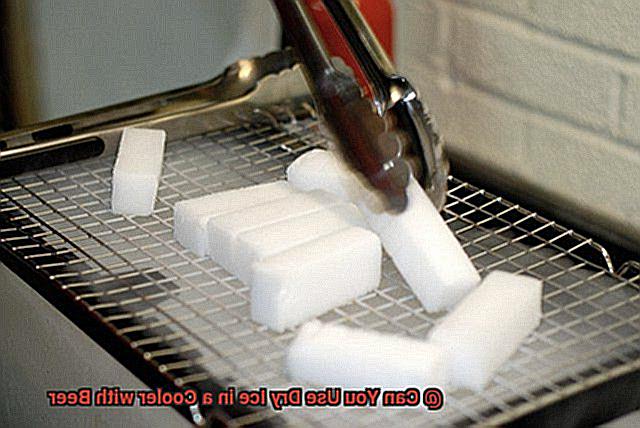
However, using dry ice in a cooler with beer requires careful consideration and execution. In this blog post, we’ll explore the topic of whether or not you can use dry ice in a cooler with beer.
So, let’s dive in.
Contents
What is Dry Ice?
This incredible substance is a solid form of carbon dioxide, which is a colorless and odorless gas found naturally in the Earth’s atmosphere.
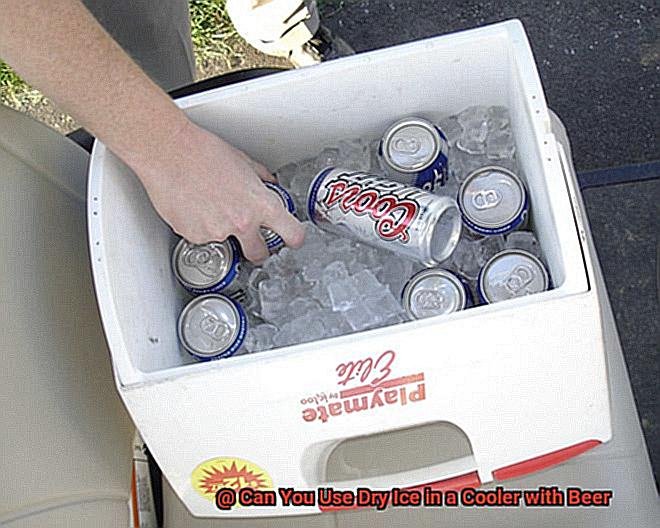
To create dry ice, carbon dioxide is compressed and cooled to a chilling -109.3°F (-78.5°C) temperature, causing it to transform into a white, powdery snow-like substance through sublimation. What makes dry ice truly unique is its ability to keep things frozen for an extended period of time.
This makes it an ideal cooling agent for a variety of purposes such as keeping food and drinks cold during outdoor events like camping or tailgating. It’s also perfect for scientific experiments that require extremely low temperatures.
However, it’s essential to remember that dry ice must be handled with extreme care, as it can cause severe burns or other injuries if not properly managed. Always use protective gloves or tongs when handling dry ice and store it in a well-ventilated area to prevent the buildup of carbon dioxide gas.
When using dry ice to cool drinks or food, it’s important to note that it can be much colder than regular ice and may freeze your items if not used correctly. To prevent this, wrap the dry ice in a towel or newspaper and place it on top of regular ice in your cooler.
This will ensure that your items stay cool without freezing solid. It’s crucial to keep in mind that as dry ice sublimates, it produces carbon dioxide gas that can displace oxygen in a closed space and become hazardous.
Therefore, always make sure your cooler has good ventilation and never completely seal the lid. In conclusion, dry ice is an exceptional cooling agent that can keep things colder than regular ice for longer periods of time.
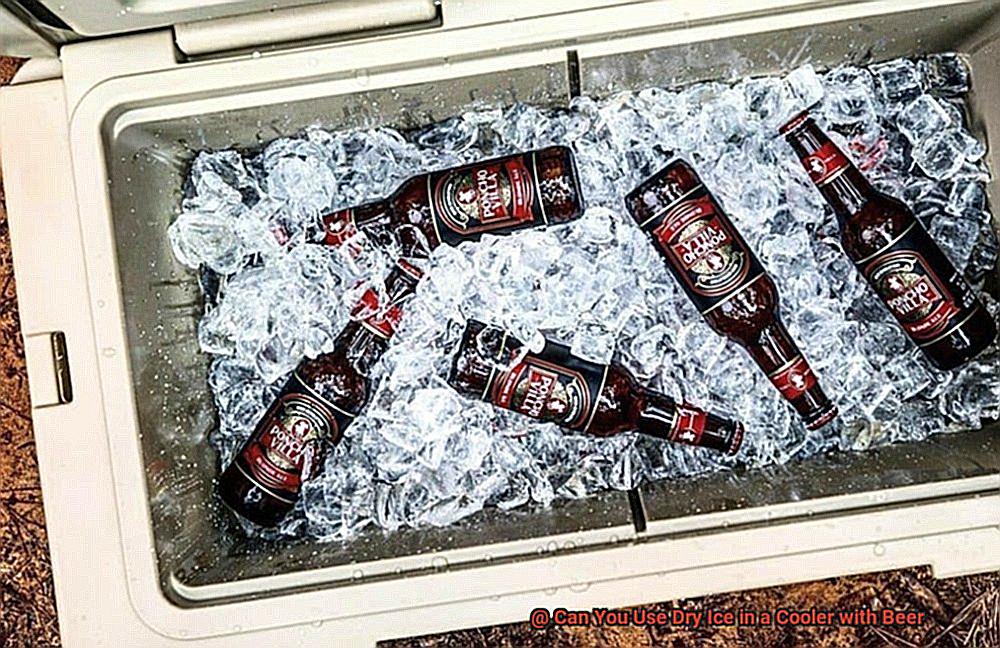
However, it’s important to treat it with care and take necessary precautions to avoid any dangerous situations.
The Benefits of Using Dry Ice in a Cooler with Beer
First and foremost, using dry ice can keep your beer and other beverages cold for an extended period, even in scorching hot weather conditions.
With a temperature of around -78.5°C, it is much cooler than regular ice and can maintain a consistently low temperature inside the cooler, keeping your beer chilled for a longer time. You can finally enjoy your drinks without worrying about them getting warm.
Another benefit of using dry ice is that it takes up less space in your cooler than regular ice. You only need a small amount to achieve the same effect as regular ice, leaving more room in the cooler for your beer and other beverages.
This means you’ll have more drinks with you and won’t have to worry about running out. Using dry ice also means that you won’t have to deal with any melted water in the cooler.
Regular ice melts over time, leaving behind a pool of water that can make your beer cans or bottles wet and uncomfortable to handle. On the other hand, dry ice sublimates directly from solid to gas, leaving no liquid behind.
This means that your beer cans or bottles will stay dry, and you won’t have to deal with any messy cleanup. Last but not least, using dry ice is also more environmentally friendly than regular ice.
Regular ice is made from water, which requires significant amounts of energy to produce and transport. In contrast, dry ice is made from carbon dioxide gas, which is a byproduct of various industrial processes.
By using dry ice instead of regular ice, you can reduce your carbon footprint and contribute to a more sustainable future. In conclusion, using dry ice in a cooler with beer has many benefits, making it a game changer for outdoor activities or events.
However, it’s essential to handle dry ice with care and follow safety precautions to avoid any accidents or injuries.
The Risks of Using Dry Ice in a Cooler with Beer
Dry ice is a popular cooling agent that can keep your beer icy cold for hours, but before you toss some in your cooler, there are some risks you should be aware of. One of the most significant dangers of using dry ice in a cooler with beer is the potential for frozen brews.
This occurs when the dry ice causes the beer to expand and potentially burst the can or bottle, making for a messy and hazardous situation. Imagine the horror of having a beer bomb go off in your cooler, spraying your favorite brew all over your friends and family.
Another risk associated with using dry ice is carbon dioxide buildup. As dry ice melts, it releases carbon dioxide gas, which can accumulate in your cooler and displace oxygen.
This can be particularly dangerous if you’re using the cooler in an enclosed space like a car or tent. In such cases, you could be putting yourself and others at risk without even realizing it.
It’s also crucial to handle dry ice with care as it can cause skin burns upon contact with bare skin. Always wear gloves when handling it and avoid touching your face or eyes afterward.
The last thing you want is to end up with frostbite on your fingers or eyeballs because of an innocent mistake. In conclusion, using dry ice in a cooler with beer can be an effective way to keep your brews frosty, but it’s not without its risks.
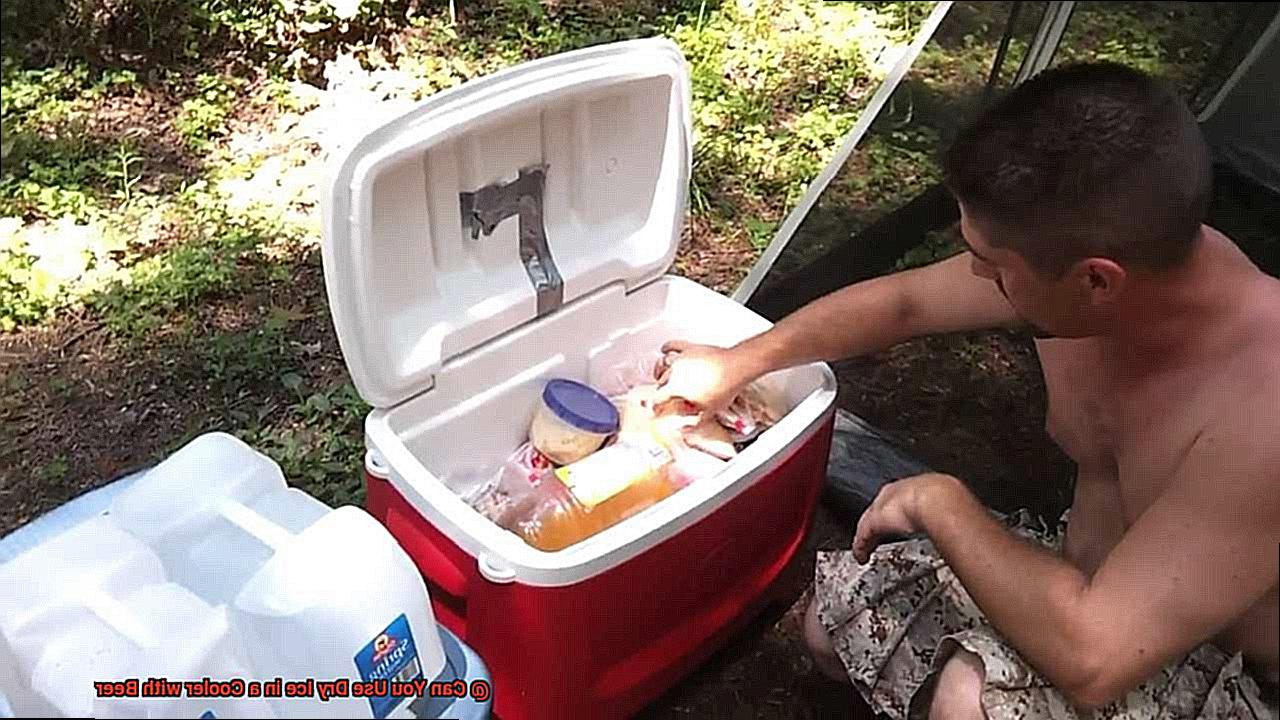
Therefore, it’s essential to handle it with caution, ensure proper ventilation when using it, and always monitor the contents of your cooler to avoid any dangerous situations.
Tips for Safely Handling Dry Ice
Dry ice is a fantastic solution, but it’s important to handle it with caution. Think of dry ice as a superhero with superpowers that need a sidekick to keep it in check. Here are five tips to ensure that you and your frosty hero have a safe and enjoyable journey.
Always wear protective gloves when handling dry ice.
Direct contact with dry ice can cause skin damage or frostbite. Consider these gloves as the shield that will protect you from harm.
Dry ice may be cold, but it’s also a gas superhero.
To prevent it from overpowering the oxygen in the air, keep it well-ventilated. Consider opening a window or using a fan to let in fresh air. This step ensures that you and your superhero sidekick can breathe easily.
Don’t trap your superhero in a confined space.
Avoid placing dry ice in an airtight container, such as a cooler with a tight-fitting lid, as the buildup of gas could result in an explosion. Give your superhero sidekick plenty of space to move around and save the day.
When using dry ice in a cooler with beer, ensure there is ample ventilation.
Superheroes need to breathe, and so does dry ice. Consider leaving the cooler lid slightly open or using a cooler with built-in ventilation. This step allows carbon dioxide gas to escape and ensures that you can enjoy your icy-cold beer without any potential hazards.
Keep your beer bottles and cans safe from the extreme cold of dry ice.
Don’t place dry ice directly on top of them, as they may break or explode. Imagine this as an ongoing threat to your superhero sidekick – protecting them ensures that you have a safe and enjoyable journey.
How to Use Dry Ice in a Cooler with Beer
Dry ice is a fantastic option to keep your drinks cold for longer stretches of time than regular ice. However, it’s important to use dry ice safely and correctly when using it in a cooler with beer.
Handle with care
Dry ice is incredibly cold and can cause frostbite if touched with bare hands. Always wear gloves or use tongs when handling dry ice to avoid injury.
Keep the dry ice away from the beer
Direct contact between dry ice and beer can cause the beer to freeze, which can affect its taste and quality. To prevent this, place a layer of regular ice or a towel between the dry ice and the beer.
Pack the cooler correctly
To keep your beer colder for longer periods, place the dry ice on top of the regular ice or food items in the cooler. Cold air sinks, so placing the dry ice on top will help maintain a consistent temperature.
Ensure proper ventilation
As dry ice melts, it releases carbon dioxide gas, which can displace oxygen and lead to potential hazards in enclosed spaces. Make sure there is enough ventilation by leaving the cooler lid slightly open.
Determine how much dry ice you need
The amount of dry ice needed depends on the size of your cooler and how long you need to keep your drinks cold. As a general rule, use 5-10 pounds of dry ice per 24 hours for a 40-quart cooler.
T_gLOPDheWI” >
Conclusion
To sum up, using dry ice in a beer cooler is an excellent way to maintain icy-cold drinks for extended periods.
However, it’s crucial to handle dry ice with care and follow safety protocols to avoid any hazardous situations. Dry ice is a frozen form of carbon dioxide that can maintain frigid temperatures much better than regular ice.
It occupies less space in your cooler and leaves no messy water behind. Additionally, using dry ice helps reduce your carbon footprint compared to conventional ice.
However, using dry ice in a beer cooler requires careful consideration and execution. Frozen beer or carbon dioxide buildup are potential issues when using dry ice.
Therefore, it’s critical to handle it with caution and ensure proper ventilation while using it. By following the instructions for safely handling dry ice and guidelines for using it in a beer cooler, you can enjoy icy-cold drinks without any risks.
In conclusion, take advantage of this innovative method of keeping your beverages cold while also minimizing waste and environmental impact.

